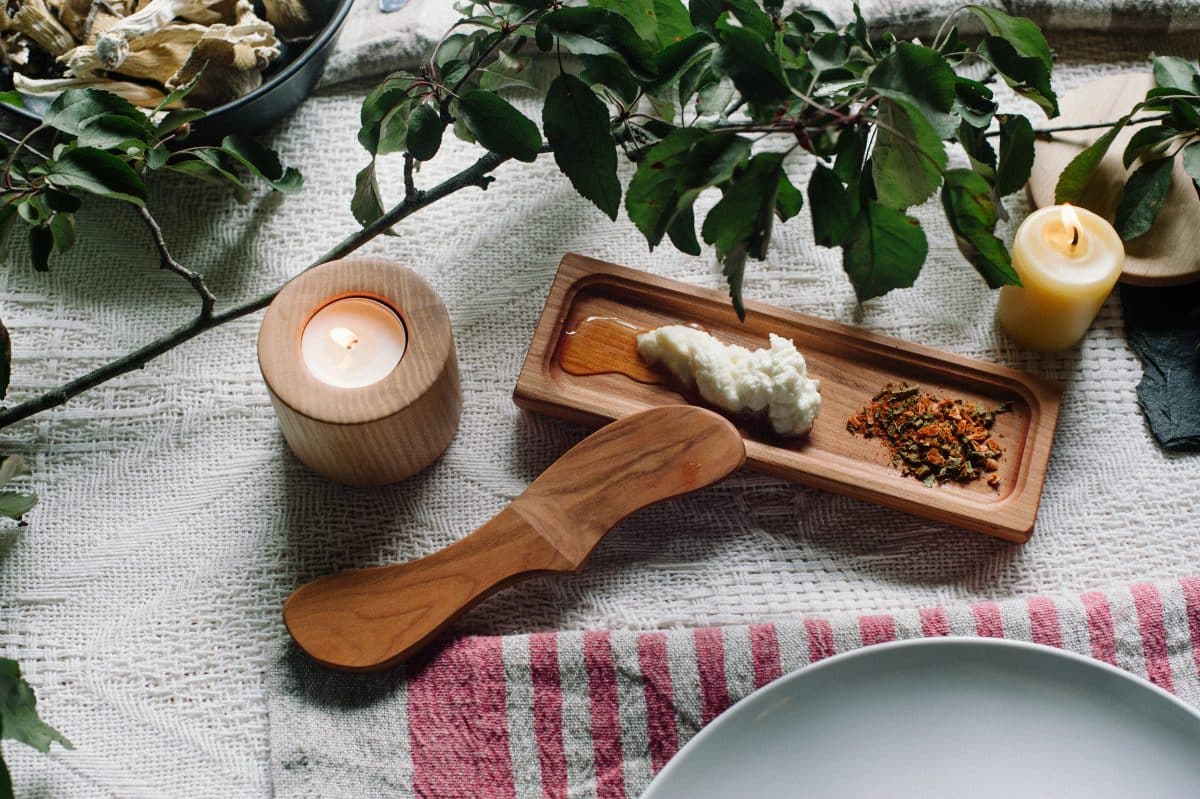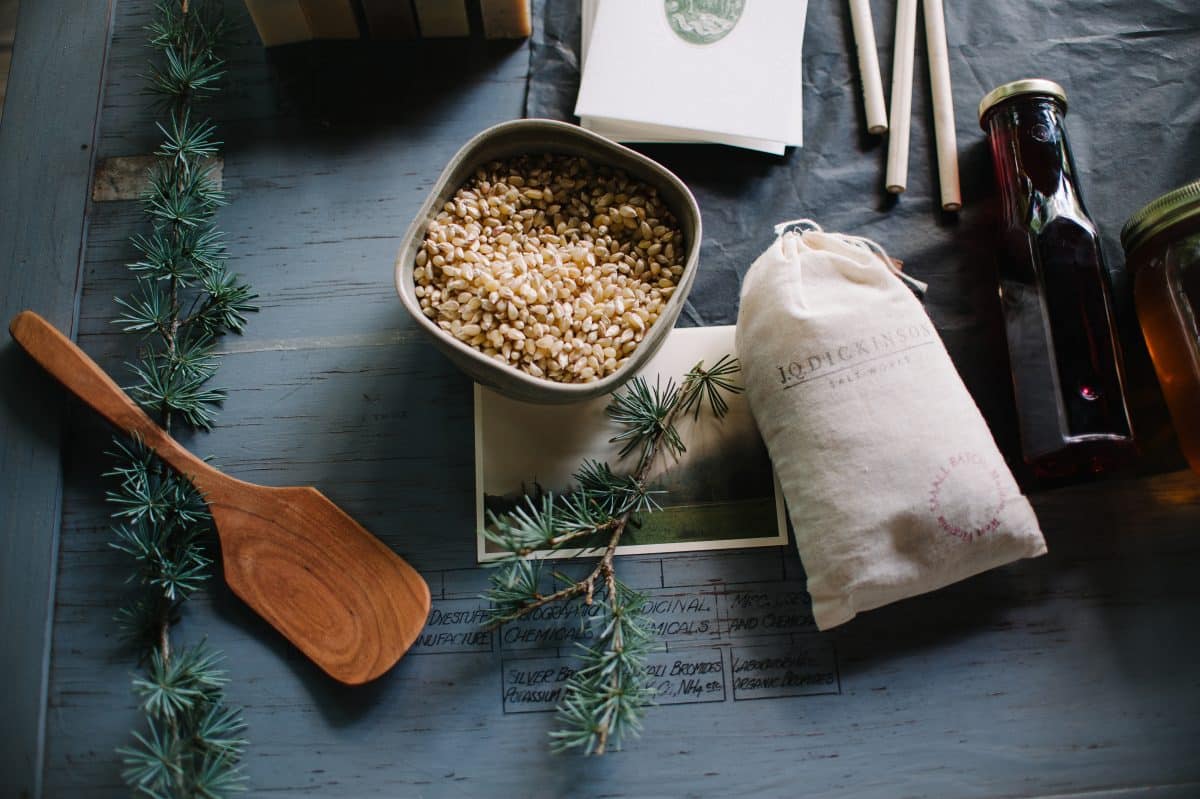Appalachian Mercantile curates J.Q. Dickinson Salt Works’ Artisan Boxes
Contemporary Appalachian foods and culinary crafts have been garnering well-deserved attention in recent years. A new generation is preserving the rich mountain culture. Their handmade goods are not only beautiful and functional, but they also serve as a reminder of the region's rich history and traditions.
By collaborating with small businesses focused on sustainability, Nancy Bruns, a former chef and restaurateur, is committed to building a stable local economy in her native West Virginia. Each box is lovingly packed with bespoke specialty goods made by Appalachian artisans. Appalachian Mercantile features artisans whose inspiration comes from a connection with the environment and are committed to preserving the traditions of their beloved region.
Read more about some featured artisans:
This definition of Appalachia is based on a combination of factors, including geography, culture, and economics. The Appalachian Regional Commission (ARC), defines Appalachia as a 205,000-square-mile region that includes all of West Virginia and parts of 12 other states: Alabama, Georgia, Kentucky, Maryland, Mississippi, New York, North Carolina, Ohio, Pennsylvania, South Carolina, Tennessee, and Virginia. The region is characterized by its mountainous terrain, unique culture, and historic dependence on extractive industries such as coal mining and timber harvesting. Despite its natural beauty and rich cultural heritage, the Appalachian region has faced significant economic challenges in recent decades, but there has been a revival of foodways and crafts in the Appalachian region in recent years. Many people in the region are rediscovering and celebrating the traditional foods, crafts, and other cultural traditions that have been passed down through generations.

“Appalachia and its people have been told what their story is supposed to be. misnamed by the Spanish in the 1500s (after a northern Florida native tribe), given a specious “elegy” in 2016, mocked in cartoons, demonized in film and photography, these stories “about” us continue to bewilder and trouble those of us who come from a history and reality that is quite different. We challenge such stories, then, by telling our own, our truth.”
–Ronni Lundy, author of Victuals: An Appalachian Journey, with Recipes
In terms of foodways, there has been a renewed interest in Appalachian cuisine and ingredients. Many chefs and home cooks are using locally sourced ingredients such as ramps, sorghum, and pawpaws to create dishes that reflect the region’s unique flavor profile. There are also efforts to preserve traditional food preservation techniques, such as canning and pickling.
Similarly, there has been a resurgence of interest in traditional Appalachian crafts. Many artisans are using traditional techniques to create handmade goods such as woodwork, pottery, and textiles.
This revival of foodways and crafts is not just a celebration of the past but also an important part of the region’s economic development. Traditional crafts and culinary traditions are a way to support families and their communities. The revival of these traditions is also helping to preserve the unique cultural heritage of the region for future generations.
“Foodways are the passport with which we visit culture without having to hop on a plane or even get into our cars.” —T.J. Smith, editor of the 2019 revised edition of The Foxfire Book of Appalachian Cookery.
In 1966, students in Georgia decided to create a magazine, featuring stories gathered from their families and neighbors about the pioneer era of southern Appalachia as well as traditions still thriving in the region. The students called it “Foxfire” after the glow-in-the-dark fungus found in the local hills. This living history project explores how the past illuminates our present and inspires imagination. The Foxfire Magazine generated global interest in the folkways and crafts of Southern Appalachia. The project continues today with the Museum and Heritage Center in Mountain City, GA. The Foxfire Magazine has been in continuous production since first published in 1967. The Foxfire Book was the first of a series of anthologies compiling articles from the magazine and focusing on the trades, crafts, and livelihoods of the Appalachian pioneers. These quotes from The Foxfire Book of Simple Living can help us understand powerful legacy of the traditions of crafts in Appalachia.
“When it comes to spirit, the Appalachian people have always been rich. When it comes to material goods, however, the people of this area have not been so fortunate. With this scarcity of material items, it has always been necessary that Appalachian folks be resourceful. It stands to reason that when one has so little, one learns to make things work with what little they may have. Mrs. Janie P. Taylor called it ‘ingenuity.’”–Katie Lunsford
“Any craftsmen take as much pride in the way they practice their art as they do in the finished products. However, for Appalachian artisans, creative process often starts before the method even begins. Creativity begins with harvesting…”–Jonathan Blackstock
“I think your heritage is as much a part of ya as anythin’ else. It’s somethin’ that should be carried on and preserved in some way for the next generation.”–Connie Carlton
J.Q. Dickinson Appalachian Mercantile will be sharing a series of stories over the next months, featuring artisans whose work you will find in their collection. Monthly and seasonal Appalachian Mercantile subscription boxes are packed with authentic regional culinary products, recipes and handmade home goods by local makers, paying homage to the rich creative traditions of the region. These beautiful boxes provide an opportunity to sample a taste of Appalachian culture; to connect the past to the present and the future. ![]()
"Sitting at the Appalachian table we can taste the proof of a strong, lasting, surprisingly diverse, and infinitely textured history. Passing our foods and our stories to one another, and extending them to you, we can see our way into the future." —Ronni Lundy
